Common Red and Golden Ringed
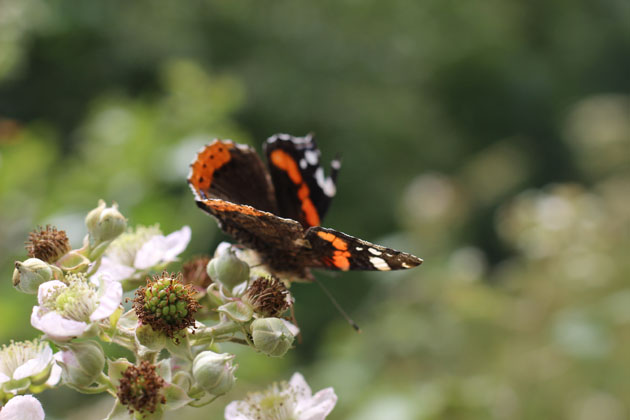
The summer heat over the weekend brought out a mass of insects at the workshop – my bramble full of butterflies and bees and the grass stems alive with flying and crawling things.
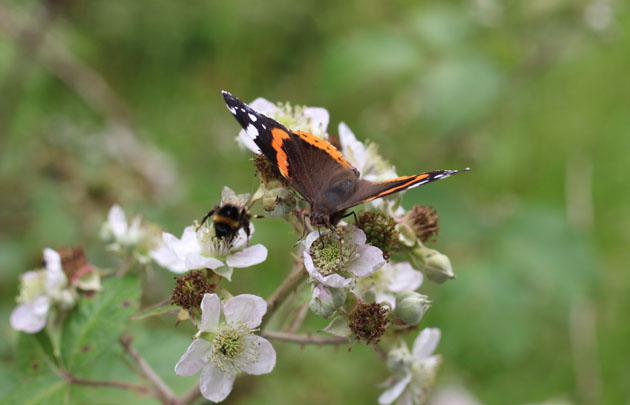
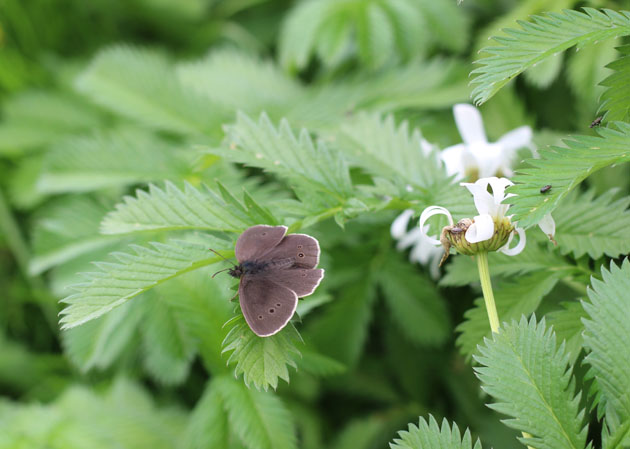
A dragonfly bumped into me – I was startled as it hit me quite hard on the head, followed by a volume of noise from its wings as it untangled itself, and I wondered what on earth it was.

I followed the click-clatter whir of its flight and it swooped onto a flower, and then swerved away to a resting spot. When I caught up with it and looked, it was eating a wasp, I could hear crunching and wet chewing sounds. The Golden-Ringed Dragonfly is a striking black insect, with yellow bands along the length of its abdomen and has huge, bright green eyes which meet at a point on the top of its head. It is the longest dragonfly in the UK and a fast, agile and powerful flyer.
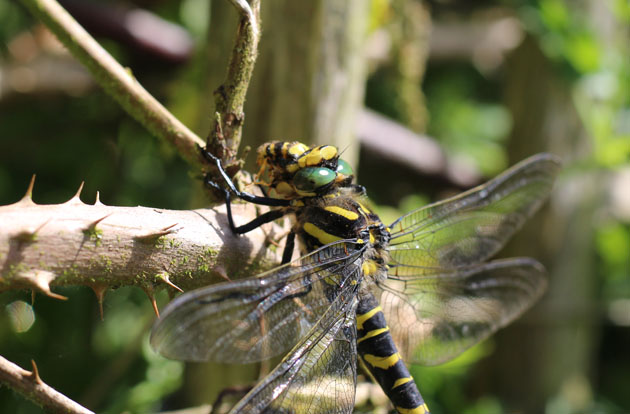
It likes small, acidic streams in moorland and heathland and is a voracious predator, feeding on large insects such as damselflies, other dragonflies, butterflies, midges, wasps, beetles and even bumblebees.
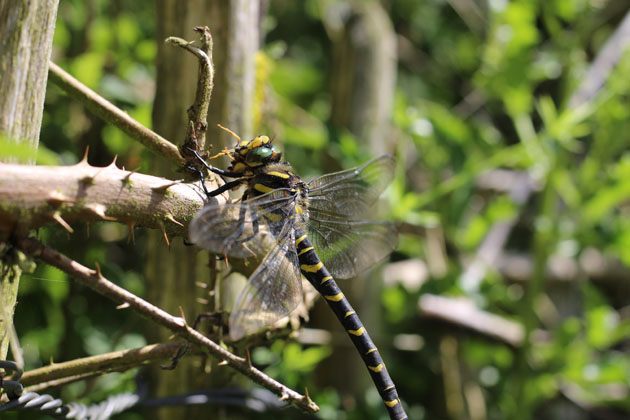
The female lays her eggs in shallow water and the hairy larvae live at the bottom of the stream, well camouflaged amongst the silt. They emerge after about two to five years, usually under the cover of darkness.
Eventually my Golden-Ringed flew off in the direction of a Hogweed flower head, which was full of the spectacularly vivid red-orange Common Red Soldier Beetles.
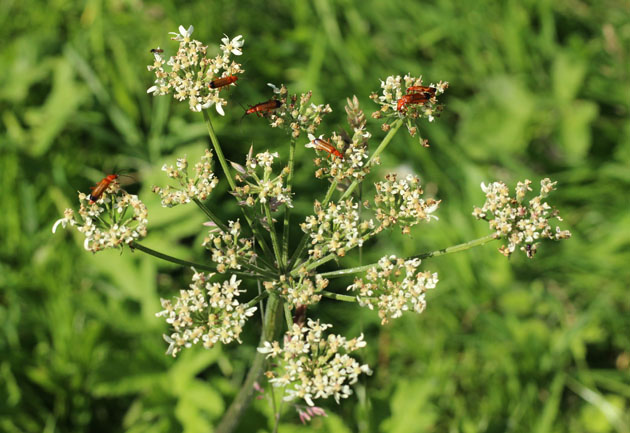
These are often seen in groups and mating pairs on white umbellifers in July and August, hence their popular name of Hogweed Bonking Beetle! They also predate other insects, those visiting the flower they are resting on, but also eat nectar and pollen. Folklore suggests that if you see these beetles on the underside of leaves, a thunderstorm is brewing.
It is difficult to get work done with all these inspiring insects – some were less interesting though, just landing on me and biting! Little blighters!
